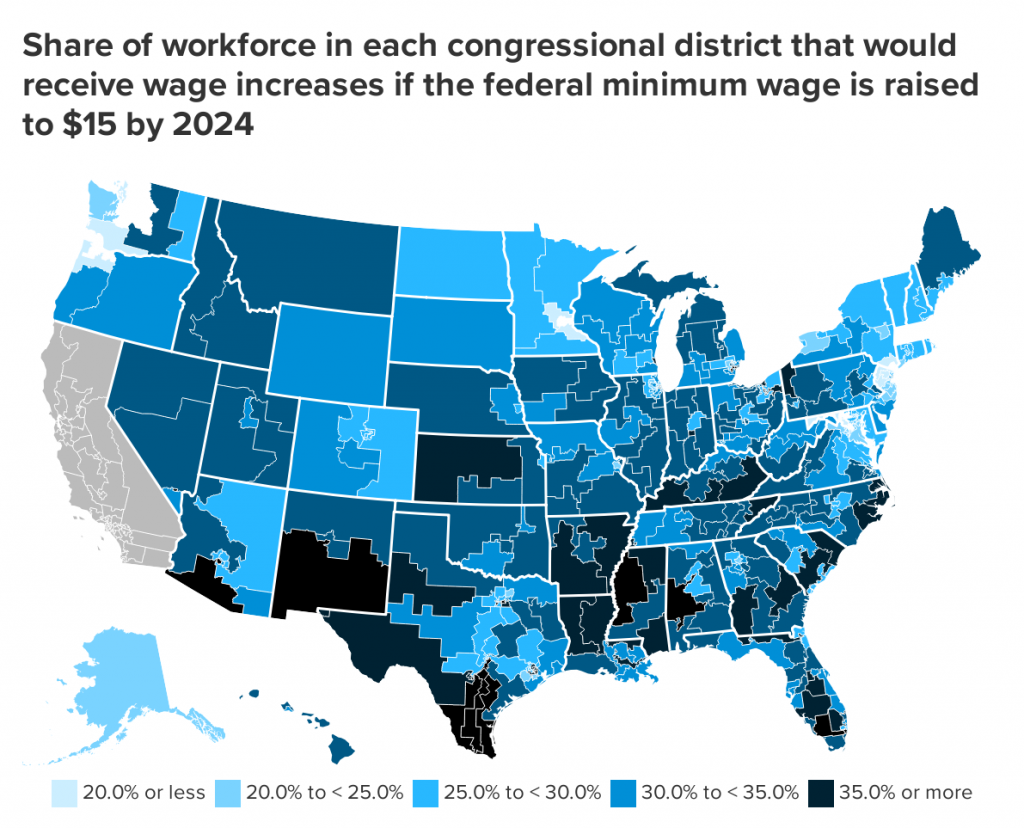News
Minimum Wage Hike Would Have Major Effect In Ohio Valley
By: Becca Schimmel | Ohio Valley ReSource
Posted on:
A new report from the Congressional Budget Office shows increasing the federal minimum wage to $15 an hour would boost the wages of 17 million workers and lift about 1.3 million people out of poverty. But the CBO warns that could also result in more than one million lost jobs and could diminish overall income for others.
The report comes as Congressional Democrats prepare to vote on the first increase in the federal minimum wage in a decade. It’s a move that could have tremendous impact in the Ohio Valley, where low-wage service sector jobs are replacing higher-earning positions in manufacturing and mining in many communities.
Democratic Congressman Bobby Scott of Virginia, who chairs the House Education and Labor Committee, said the new CBO report makes a strong economic case for a higher minimum wage.
“Raising the minimum wage will provide a boost in the economy by putting money in the pockets of workers who will spend that money in the economy,” Scott said in a press call.
Scott is pressing his caucus for passage of the Raise the Wage Act of 2019, which would increase the federal minimum wage to $15 an hour over the coming five years. The bill would also eliminate the lower minimum wage for tipped workers. The federal minimum wage is currently set at $7.25 an hour and hasn’t increased since 2009.
Opponents are concerned that raising the minimum wage could strain employer budgets, add costs for consumers, and result in fewer people being hired.

Regional effects
The Economic Policy Institute, a left-leaning think tank, conducted a separate analysis in February showing how the Ohio Valley region would be affected by a $15 minimum wage by 2024. The policy group’s research shows across the nation about 40 million workers would see an increase in pay, and parts of the Ohio Valley would see some of the most pronounced effects in the country.
For example, the EPI report predicts that in large portions of eastern Kentucky, southern West Virginia, and southeast Ohio, roughly 40 percent of workers would see some increase in wages.
EPI says some workers employed year-round in Kentucky could see an increase in their average annual income of about $4,000. In West Virginia and Ohio workers might see about $3,000 more in average annual income.
EPI Economist Ben Zipperer said, in general, raising the minimum wage can help workers who earn the least, and he said those are typically women and people of color.
“Minimum wages, because they focus on the bottom of the wage distribution, they affect and raise wages for people who are the least-paid in our economy,” he said.
Zipperer said raising the minimum wage can help reduce pay disparities by gender and race. He also said a federal minimum wage increase would improve incomes even for those working above the current rate.
“And then also you’re going to be raising wages for people who are just earning about 15 or a little bit more than that as there is some kind of ripple effect,” he said. “It does extend a little bit beyond.”
The Economic Policy Institute report is based on data from the American Community Survey. The states are broken up into Congressional districts where people live and not necessarily where they work. EPI said the CBO’s report overestimates the number of job losses that would come from raising the minimum wage.
The policy center of EPI is lobbying for passage of the Raise the Wage Act.
Opponents of raising the minimum wage worry it could cause employers to lay off workers and raise unemployment levels. There’s also concern that raising wages would cause production cost and prices to increase, forcing more people into poverty rather than lifting them out of it.
The Heritage Foundation, a conservative think tank, argues small businesses would not be able to increase revenue enough to cover the cost of higher wages. The group also said employers would be forced to increase prices or cut costs by laying people off.
The CBO report notes uncertainty about the responsiveness of employers to a wage increase and how incomes will increase by 2025.

